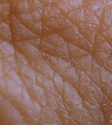


A protein linked to the spread of several major human cancers may also hold great potential for the elimination of wrinkles and the rejuvenation of the skin, according to a team of researchers from Berkeley Lab and the University of Western Ontario. Controlling concentrations of the RHAMM protein could one day replace surgical procedures or injections with neurotoxins. More>
 Special Event: Registration Open for UC Berkeley Energy Symposium
Special Event: Registration Open for UC Berkeley Energy Symposium“Bold Ideas for a New Energy Landscape” is the theme for UC Berkeley’s third annual Energy Symposium on Monday, Feb. 23, in the MLK, Jr. Student Union. The gathering will “explore the cutting edge science and policy that will craft the future energy landscape in America.” The event features several Berkeley Lab panelists: Arun Majumdar, Steve Selkowitz, Mary Ann Piette, Chris Marnay, and Charles Goldman, all with the Environmental Energy Technologies Division. More>
 In The News: The Scientist Features Keasling, Chang in Articles
In The News: The Scientist Features Keasling, Chang in ArticlesThe Scientist magazine has two articles in its latest issue that feature Berkeley Lab scientists. The first story is on Jay Keasling and his efforts to “marshal in the new era of alternative energy” via the Joint BioEnergy Institute as well as the development of a synthetic anti-malarial compound through his company, Amyris Biotechnologies. The second article is on Michelle Chang (pictured), who is working to coax microbes to do the dirty work of converting lignin, an agricultural waste product, into carbon sources to make fuels (registration required).
 In The News: 'Free Cooling' Makes Data Center Greener
In The News: 'Free Cooling' Makes Data Center Greener[Sacramento Bee] A data center under construction at McClellan Park has won the nation's highest green-building rating for its air-cooled chiller system, which pulls outside air through filter-backed louvers. But many data centers continue to run air conditioners during hours in which the outside air is cool enough to do the job, according to Berkeley Lab’s William Tschudi. "We wondered, 'Why are people doing this?' and what we found out is that the data industry had grown up this way back from the days of mainframes," said Tschudi, who works in the Environmental Energy Technologies Division. More>
 In The News: Obama’s Billions for Energy Fuel Academic Research Dreams
In The News: Obama’s Billions for Energy Fuel Academic Research Dreams[Bloomberg] In the basement lab of Nitash Balsara, with Berkeley Lab’s Materials Sciences Division, are the ingredients of a lighter, more-potent battery to power the cars of the future. To build it, he needs President Barack Obama’s stimulus package to pass. Balsara has assembled a team of 15 scientists that applied for $25 million over five years from the U.S. Department of Energy to improve batteries by modifying their materials. More>
 Employee Activity: Philanthropy Club’s Chemo Cap Project a Success
Employee Activity: Philanthropy Club’s Chemo Cap Project a SuccessBerkeley Lab employees generously responded last year when the Philanthropy Club sponsored a chemo-cap project. Chemo caps can help suddenly bald cancer patients feel like themselves again. From April to October 2008, staff knitted and crocheted 180 caps. The caps were donated to Children Hospital and Alta Bates Hospital for their patients. Go here to see a list of employees who participated. Another chemo-cap project will be launched in the third week of this month. Look for updates in Today at Berkeley Lab. The Philanthropy Club welcomes suggestions for other projects; contact Club President Sharon Hernandez with your ideas.
 In Memoriam: IT Computer Systems Engineer Marjorie Allen
In Memoriam: IT Computer Systems Engineer Marjorie AllenMarjorie Allen, a computer systems engineer with the Lab’s IT Division, passed away on Jan. 25. Allen began her career with the Lab in 1991 and worked as part of a team supporting IT for the Facilities Division. A memorial service will be held for Allen on Thursday at 11 a.m. at CP Bannon Mortuary (6800 International Blvd., Oakland). Donations in her name can be made to the Murray Jacobs Senior Memorial Foundation (510-841-8230). Staff interested in grief counseling can contact UC Berkeley's CARE Services (643-7754).